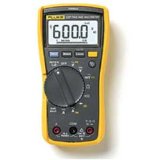

Search This Site
Search With Google
Soil Moisture Meter
Examples Of The Garden Moisture Meter
Garden Moisture Meter
Thirsty Light Garden Moisture Meters
Sometimes when you go out shopping you just happen to come across something that really appeals due to its simplicity and novelty Thirsty light plant moisture meter
Moisture Meter Guide
The complete moisture meter website
The garden moisture meter is an adaptation of the conventional moisture meter and is used to monitor plant, soil, leaf and grain moisture levels. Depending upon which moisture meter you have, they also have the ability to carry out a soil PH test, fertility tests and sunlight conditions. All of these uses will help and ensure that your growing and storing conditions are at their optimal levels.
The garden moisture meter helps any avid gardener to measure and monitor many different conditions to ensure that they can maintain healthy growing conditions for both indoor as well as outdoor plants. In order to have healthy thriving plants is not simply about planting a plant, watering it and then talking to it when it looks a little withered. Conditions such as the PH level of the soil, sunlight conditions and temperature all play a vital role in the health of plants. Without full knowledge and monitoring of these conditions, your plants will suffer. Just a simple task as watering a plant can have adverse effects. Under watering can be as detrimental as over watering. So testing moisture content of a plant’s soil is just as vital a test to perform. And as gardener’s benefit from the moisture meter, so do farmers. They can use the moisture meter to test soil prior to crop plantation and monitor moisture conditions for any stored grains.
All in all the garden moisture meter proves itself to be a vital instrument amongst the green fingered fraternity and if you are planning on growing and appreciating wonderful plants then you need to put the moisture meter on top of your shopping list. The initial expense will be recuperated hundreds of times with the resulting fine and majestic plants you nurture.
Moisture Meter Guide 2010 Contact details:garnett65@hotmail.com
How To Make Your Own Homemade Moisture Meter For Plants
Having a moisture meter to test the soil conditions in which your plants sit is a pretty good idea to say the least. A moisture meter can either use electrical contact or sensors to gain a reading. Now if you do not want to go and buy a moisture meter it is possible to make your own at home. The homemade version will be the prolonged version and is easy to make if you have the correct materials.
To make your own moisture meter you will require an electrical current to measure the moisture content. This is because the resistance between the prongs needs to be measured. The best way and most practical method is to have a portable ohmmeter to measure the resistance. To make the actual moisture meter you will need 2 pieces of metal (probe shaped) such as paper clips or wire from a coat hanger. You will also need wide straws in which to house the metal prongs without them touching each other or the sides of the straw. Other materials required are plaster of paris, scissors, wire to attach the prongs to the ohmmeter and glue.
To actually make the moisture meter, select the metal you will use for the prongs. You want this metal in a U shape and ensure that the 2 tips do not touch each other. Ideally you want the prongs parallel to each other with a distance between them of about 1/4 inch. Secure their position using the glue between the prongs.
Once the glue has dried, place the prong wires in the straw so that the probe ends slightly protrude out from the end of the straw and the other end protrudes enough so that you can attach the wires from and to the ohmmeter. Cut the straw to the correct lengths. The prongs cannot touch the side of the straw so coat the prongs properly in glue and also seal the top end of the straw with glue so that the plaster does not escape when you put it in the straw.
Mix up your plaster, only a little is required, and pour it in to the straw ensuring that it travels down the whole length of the straw. Tapping the straw will help with this. Once the straw is filled wait for about an hour for the plaster to dry properly and cut away the bottom of the straw until the plaster is revealed. Wait another 24 hours and then the moisture meter is ready to use. To use your home made moisture meter just insert the prongs in to the soil and wait a couple of seconds. You can test the resistance between the prongs with the ohmmeter. The higher the resistance the drier the soil.
Types of moisture meter for plants
In determining water requirements for plants, the moisture meter is invaluable. There are no set instructions for plants and different care is required for different species depending on location and numerous other factors. When it comes to the watering of plants, the moisture meter takes away any guesswork. Though good for testing outside plants, the moisture meter is most effective when testing potted plants. There are several ways to test the moisture content with plants.
Indicator strips are reusable and employ a chemical reaction to gain a moisture content result in soil. They are pushed in to soil and the bottom of the strip will absorb moisture. The moisture will spread and rise up the strip at a determined rate. If the strip turns green then the moisture content of the soil is fine. If it turns white then water is required. For plants that like dry conditions the soil indicator strip has to be pushed right down in to the pot. For those that require moist conditions, not so deep.
Another tool that can be used with soil testing is the gauge reader. This is the most common water meter used these days. At one end it will have a gauge with a scale on and at the other end a probe for inserting in to the soil. These can be very cheap to buy or if high tech rather expensive. Accuracy is always an issue when testing moisture content, so avoid any inaccurate models.
The top of the line moisture meter is the moisture and light meter. This can be used to test for the time to water and also to see if the light conditions are suitable. It works by having a gauge for water levels and a light spectrum dial for the light testing. Again. With this model you insert the probe in to the soil and wait a minute or so for the result to come. The light meter is held up to the leaves of the plant to gauge light levels and give a reading of low, medium or high light.
Luster Leaf 1820 Moisture Meter
This Luster Leaf moisture meter can be used to measure moisture content in your lawn, garden, outdoor plants and potted plants for an instant result and reading. It is easy to use and the analogue display shows a relative reading that is very easy to understand. The result that this moisture meter gives can be compared to the watering guide that comes with this meter when you buy it. The soil probe for this meter has a flexible cable attachment so you can test hard to get to places such as hanging baskets. No batteries are required for this unit.
Luster Leaf 1827 Soil Moisture Meter
This digital moisture meter can be used to monitor moisture content in soils. What we particularly like about this instrument is the built in data base that gives the requirements of different plant species. You can organize this data base as well to have your own personal favourite list. The moisture level results are given graphically against optimal conditions to help you make instant watering plans. For flexibility there is an extendable cord that helps you test hanging baskets or grouped plants.
Easy read digital display
Built in data base
Automatic off feature
Corded probe
We have highlighted two moisture meters from Lusty Leaf. Lusty Leaf is a company that supplies many good quality testing items to be used in and around the garden. From personal experience we find their products to be of high quality and very reliable. For a more comprehensive look at the moisture meter and other garden testing items, check out the Lusty Leaf official website.
The soil moisture meter is a measuring instrument used to measure the content of moisture in soil. In agriculture and related fields, time after time the soil moisture meter proves to be invaluable. By detecting moisture content in soil one can make a decision as to how much water should be added to the content of the soil to provide ideal growing conditions for any plant and crop.
Any gardener or farmer can easily own a soil moisture meter as they are relatively inexpensive to buy and easy to use. This particular type of moisture meter tends to use a colour coded reading result making it pretty basic , and quick, to ascertain if a particular soil requires water. If the reading is green you can be pretty relaxed knowing that your soil is fine. A red reading result will alert you to the fact that your soil is lacking in moisture and you can act accordingly. The readings given are pretty much instant as well. The soil moisture meter can work on different principles. You have ones that use electrical resistance blocks and others that employ thermal dissipation blocks.
When you think of soil it is easy to fall in to the trap of believing that it is a simple thing. But moisture levels in soil play a crucial role to the health of plants. Now after a day’s rain if you look at your soil in the garden you will probably notice that there are some surface puddles still around and that there are some areas where the rain water just seems to roll off. All this will indicate that certain parts of your garden are over saturated and other areas find it hard to absorb water. This can have consequences for your plants depending on where they are planted and the amount of water that they require to thrive. You can use the moisture meter to test different areas of your soil and providing you know the water requirements of your particular plants, you can either move and replant your plants or work with the soil itself.
Soil itself can also impact on how water flows. So you need to be familiar with your soil in order to plan your garden. For example tomatoes and rose bushes do not like to sit in water. Of course they require water but not in excess. Soils that hold water tend to have a higher percentage of clay in them and form puddles. There is not much in the way of air particles in a clay soil so the water has a problem filtering through. Hence puddle formation. By adding organic matter and microbes to this type of soil will help with the issue. Loamy soils on the other hand will hold a lot of moisture and drain well. So the soil will be hydrated and aerobic. This type of soil will support a greater variety of plants.
Before planting your plants it is advisable to have a soil analysis done. This will assist you in deciding which nutrients need to be added and which are already present. Different soils contain and require different nutrients. But for the water and moisture content issues, the way to go is to invest in a moisture meter. With one you can plan how much water your soil requires, which plants will thrive in a particular spot in your garden and whether you need to add nutrients to improve the soil structure. By getting your soil to the right condition will result in healthier plants.
So the moisture content of your soil is imperative to having healthy plants. Many people over water plants with dire results. So monitoring moisture content is soil vital. As well as drowning plants, over watering can also encourage fungi growth. The moisture meter for soil can be purchased from any garden specialist shop and the majority of them will have a cable which allows you to to carry out a soil test at depth. This is particularly useful for testing for trees and plants with a deep root system. All you do is insert the moisture meter down in the soil to the required depth and take the reading.
As well as the moisture meter there are a couple of other ways to test moisture content in soil. Though not fantastically accurate the hand feel test will give you a rough idea on how moist your soil is. Simply grab a handful of soil and squeeze it in your hand. If it is powdery and does not maintain it’s shape then it is dry. On the other hand if you squeeze the soil and it emits water then it is waterlogged. Something in between the 2 is probably the ideal condition for a majority of plants. For outside soil you can use a rain gauge. The rain gauge monitors the amount of rain that has fallen and with a little calculation it is possible to work out if you need to do additional watering to get your soil to the correct moisture levels.
The Plant Moisture Meter
A plant moisture meter is a very useful instrument that allows you to test the moisture level of soil that your plants sit in. If you love gardening and growing plants then this is one item of gardening equipment that you cannot be without. Reducing the risk of over or under watering your plants you are well on the way to producing fine, healthy and majestic looking plants.
Choosing a plant moisture meter
The plant moisture meter is inexpensive to buy and can be used on both inside and outside plants. When it comes to selecting a moisture meter you need to compare the accuracy of the particular moisture meters you are interested in. Models of the moisture meter that are analogue will give readings that are quite limited and less accurate than digital versions. A digital moisture meter will give a reading from 0 to 40%. Whereas an analogue model generally gives a reading from 10 to 30%. A significant difference. The moisture meter varies in structure. Some models will have long coiled cables attached to them which contain sensors. This prove to be very good if you wish to test depth and difficult areas to reach. The moisture meter will run off a battery. Now many digital models will have a low battery indicator on them. This is good as you will then know when the battery requires replacing. Some models of the moisture meter will come with a protective cap to protect the sharp probe or pin. When testing for moisture you want the pin or probe to be in tip top condition to get an accurate reading. Finally use the internet and read as many reviews as you can on the moisture meter to get a good idea as to which one is worth investing in.
How to use a moisture meter
To prevent over and under watering plants, the plant moisture meter is the perfect tool. They are easy to use and generally have a scale reading of 1 to 10 with 1 being the most dry and 10 being the most wet. The majority of plant moisture meters will also have a colour range composed of red, green and blue. They are cheap to buy and can give you a moisture reading immediately.
So choose your moisture meter. They can be simple or advanced and have the capabilities of testing moisture, light and soil acidity. Ensure that you have one which measures immediately. For indoor plants simply hold the head end of the moisture meter and insert the other end, the probe, in to the soil. The ideal depth you want is about ¾ of the pot depth so that the moisture content is measured at root level. The red level is the driest on the scale. This is what you want for such plants as cactus. Green mode indicates a moderate moisture level. Most plants require this level. When testing and you get a red reading then water has to be given to the plant if it fits in to the green range. If the moisture meter shows blue then the soil is too moist for a green zone plant. The blue zone on the meter range is the wet range. Such plants as the fern require much water and hence have a perfect reading of green/blue combination.
The moisture meter is also suitable for testing outdoor plants as well. They are particularly useful if you are using drip irrigation to water your plants. Maybe the emitters have become clogged and you will not notice this until the damage to the plant has been done. So always test around your outdoor plants to ensure that they are receiving the water they require.
When you have a moisture meter you want to use it frequently and keep records of the results. By also having your own moisture meter you are in a position to be able to carry out random spot checks as well. When using the moisture meter do not leave it too long in the soil and after use always clean and dry it properly. You want to keep your moisture meter in top condition.

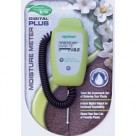
Compost Moisture Meter
Compost is organic matter which has been decomposed and then recycled as a fertilizer or soil amendment for your garden. With organic growing and farming, the use of compost is key. Basically the whole process of composting is simply collecting organic matter, such as leaves and food waste, piling it all together and waiting for it to break down in to humus over a period of time. That is the simplified version but there are methodical methods and steps to take to achieve fine compost. Water, air, carbon and nitrogen needs to be added whilst correct aeration will assist the decomposition process. Turning over compost is a must and fungi and worms will also greatly assist in the matter break up. Aerobic bacteria will convert any added matter in to heat, ammonia and carbon dioxide. Ammonia will then be converted in to nitrates by the bacteria. Compost is rich in nutrients and can be used in gardens, landscaping and agriculture on a large scale. It will benefit the soil by conditioning it, fertilizing it, adding humic acids and as a pesticide.
Equipment Required For Composting
First and foremost you will require a container to hold the compost. You could if you want, simply make a compost pile on your lawn but this may be unsightly and promote problems with your neighbours. A compost bin or compost wooden container are the most popular options gardener’s prefer.
As well as a compost holder you will require a compost turning tool. This usually comes in the shape and form of a gardening fork. But if you have a tumbling compost holder then a garden fork is not really required.
When making compost it is important to monitor the temperature inside your compost bin. You want your compost not to be too hot or too cold. Guideline temperatures are from 104 to 150 degrees Fahrenheit and keeping your compost within this range will provide great benefits. You can frequently test your compost with a compost thermometer.
As well as monitoring the temperature of compost you will need to monitor the moisture levels of it. Having the correct moisture levels in your compost bin will ensure that optimal working conditions. If you have too much water or too little water in your compost bin, the breaking down process of the compost can be severely affected. So a moisture meter is required and you need to test the moisture levels on a frequent basis. If the garden moisture meter tells you that your compost is too dry then simply add some water.
Rapitest Moisture Meter
Tomatoes And The Moisture Meter
Perhaps one of the most popular plants grown by gardener’s is that of the tomato plant. And it is no wonder why. The tomato is so versatile and when home grown, so tasty. For the not so experienced gardener the pattern is to purchase a young tomato plant from the local garden centre, dig a hole and simply plant the tomato plant with additional potting soil, fertilizer and water. With watering every day and adding fertilzer every week, the novice will expect the tomato plant to flourish and provide a bumper tomato crop.
At first this may appear to be the case as the shoots of the tomato plant shoot up quickly and splendid vibrant green leaves shortly follow. All the signs of a healthy tomato plant. But how often after a couple of days do these vibrant green leaves begin to turn a pale yellow colour? Quite often actually and one remedy for yellow leaves is a nitrogen fertilizer. So nitrogen fertilzer is added with more water. The problem of yellow leaving may not be rectified by this additional fertilizer. In fact the problem may worsen with even more leaves turning yellow and any additional shoots being very spindly and weak. In fact your tomato plant may look like it is on it’s way out and all hope is lost.
This is the time to step back and scrutinize your gardening techniques. Over watering and over fertilizing tomato plants will result in stunted plants, little produce and a short lifespan. One way of ensuring that you never over water a tomato plant is to have a garden moisture meter. With one you can test the moisture content of the soil in which the tomato plant lives. Tomato plants require a soil in the range of 2.5 and 5.5 moisture content reading on a soil moisture meter. They are cheap to buy and it is even possible to make your own moisture meter for the job.
As well as a moisture meter for your garden and any plants you wish to grow, a soil testing kit is also another essential item a gardener should have. By testing the soil you will know whether you are adding too much fertilizer or indeed if you need to add fertilizer to your soil.
The Rapitest digital moisture meter is one of the most popular selections amongst the gardening fraternity. It is very reasonably priced and is stocked widely by the majority of garden centres and gardening equipment stores.
To use one is simple enough. Firstly switch the unit on by pressing the power button and then insert the probe in to the soil you wish to test. For pot plants you should push the probe at least half way down in the pot to get a suitable reading. As you insert the probe in to the soil you will notice that the readings will change as the probe goes deeper. Do not be concerned about this as soil conditions are not uniform and it is possible to have moisture pockets in the soil. The thing to do to eliminate this discrepancy is to take a couple of readings at the same time. The reading on your moisture meter you should take note of is the reading that remains constant for about 5 seconds.
After getting your required reading take the probe out of the soil and clean it with a cloth or tissue. The final results will be between 1 and 10 on the meter scale which informs you as to the state of your soil and whether watering is required.
Useful Tips
Small pots will dry out a lot quicker than big pots.
Soil in clay pots will dry out quicker than soil in plastic pots.
Plants exposed to direct sunlight will dry out quicker than plants which are in the shade.
Plants in the home situated near to heating elements will dry out quickly.
Over watering is a term applied to the frequency of watering and not the amount of water given.
Vegetables
Asparagus
Beans
Beets
Broccoli
Cabbage
Carrots
Cauliflower
Corn
Cucumber
Lettuce
Onion
Peas
Pepper
Potato
Spinach
Tomato
Turnip
Rapitest Moisture Meter Readings
Below is a table of some popular vegetables and garden plants with the number that is suitable for their existence on a rapidest moisture meter scale. When testing if your moisture meter reading is higher than the number indicated next to the plant in the table, do not water. If lower then you need to water.
Plants
Azalea
Bamboo
Daffodil
Dahlia
Fuchsia
Iris
Lily
Palm
Pine
Primrose
Rhododendron
Rose
Tulip
Reading
3-
2-
3-
2-
3-
2-
3-
2-
3-
3-
2-
2-
2-
2-
3-
3-
3-
Reading
4-
4-
4-
4-
4-
3-
4-
3-
3-
4-
4-
4-
3-
Wagner
General Tools MMD5NP Pinless LCD
General Tools MMD7003 Precision
General Tools MM700D Precision
The Orchid Moisture Meter
The orchid belongs to a widespread and very diverse family of flowering plants which have fragrant and colourful blooms. Orchids can be found in pretty much every habitat. Testing the moisture in orchid soil
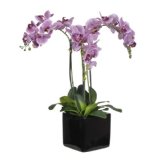
Firewood Moisture Meter
The Stihl moisture meter can be used to detect and give a moisture reading level in firewood. This is important if you have a log burning fire or stove. It is essential that you only burn well seasoned wood. As well as being able to detect the moisture levels in firewood the Stihl moisture meter can be used on both paper and cardboard as well.
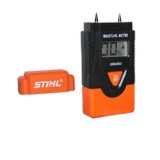
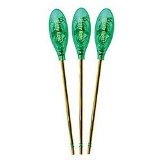
Hydroponic Moisture Meter
Hydroponics is a way of growing plants in water, using mineral nutrient solutions and no soil. Terrestrial plants can be grown using such mediums as gravel, mineral wool, expanded clay and rock wool. Hydroponics
Lawn Roller
In the quest for the perfect lawn the gardener requires certain gardening tools to assist him or her.
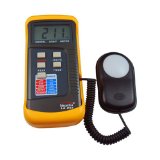
Petrol Strimmer
So if you are in the market for buying a petrol strimmer you can either sit in the comfort of your own home and browse the internet until you find what you are looking for. Petrol strimmers
Lawn Scarifier
When choosing from the vast array of lawn scarifiers available to you, the size of your lawn and the budget available to you to invest will be deciding factors. The lawn scarifier
Petrol Chainsaw
The petrol chainsaw is a mechanical hand held saw. It can be powered by either petrol or diesel. Chainsaws
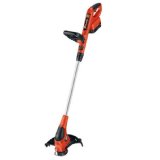
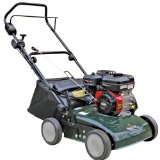
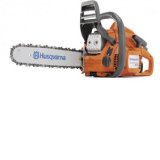
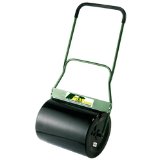
The Bonsai Tree Moisture Meter
When you check out the definition of bonsai in the Collins English Dictionary the description you get is “The art of growing dwarfed ornamental varieties of trees or shrubs in small shallow pots by selective pruning” Moisture meter for bonsai plants
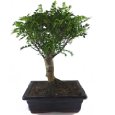
The Chilli Plant Moisture Meter
When growing chilli plants the moisture content levels in the soil are of great importance regarding the health of your plant. All plants require light, but the chilli plant. Moisture meter for chilli plant growing
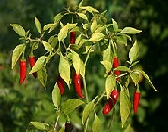
Compost Moisture Meter
Compost is the result of organic matter decomposing. Such organic matter includes amongst other things, garden waste, manure, leaves, kitchen scraps. Moisture in compost
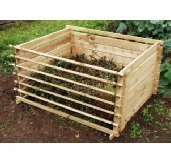
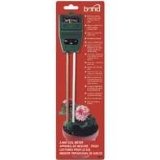
| Tramex Moisture Encounter Plus |
| Tramex Compact Wood Moisture Meter |
| Tramex Concrete Encounter Moisture Meter |
| Tramex Skipper Plus Moisture Meter |
| Tramex Roof And Wall Moisture Scanner |
| Sonin Digital Moisture Meter model 50218 |
| Sonin Digital Moisture Meter 270 model 50270 |
| Sonin Moisture Test Tool model 50210 |
| Sonin Moisture Test Meter Model 50211 |
| Oak |
| Douglas Fir |
| Beech Tree |
| Elm Tree |
| Hickory Tree |
| Maple Tree |
| Pine Tree |
| Prevent And Repair Gaps In Wooden Floorboards |
| How To Fix A Squeaky Hardwood Floor |
| How To Repair A Hardwood Floor That Has Buckled |
| Which Is The Best Firewood? |
| Concrete |
| Concrete Moisture |
| Screed Moisture Meter |
| SDS Drill |
| Belle Cement Mixer |
| SDS Drill Advice |
| Which SDS Drill |
| SDS Drill Accessories |
| Drilling Into Concrete |
| Kennedy Tool Box |
| Moisture - Basic Facts |
| Types Of Damp |
| Wet Rot |
| Dry Rot |
| Mold |
| Water Leak Detection |
| Stucco Moisture |
| Water Damage |
| Moisture And Rust |
| Moisture Damage To A Chimney |
| Wallpaper Stripper |
| Plaster Mixer |
| Why Worry About Moisture Problems |
| Does Your Home Have A Moisture Problem? |
| How To Solve Moisture Problems |
| How To Use Anti Mold Paint |
| Rising Damp |
| Condensation |
| Salt Damp |
| How To Avoid Bathroom Condensation |
| How To Remove Black Mold |
| How To Prevent Bathroom Mold |
| Soldering Kit |
| Soldering Kit Contents |
| Soldering Kit Advice |
| Bonsai Tree Classification |
| Growing Bonsai From Seed |
| Bonsai Tree Care |
| Bonsai Tree Training |
| Bonsai Tools |
| Displaying Bonsai |
| Bonsai Calendar |
| Bonsai Plants |
| The Thirsty Light Curve Moisture Meter |
| The Thirsty Light Ladybird Moisture Meter |
| The Thirsty Light Bumble Bee Moisture Meter |
| The Thirsty Light Butterfly Moisture Meter |
| Hanna Instruments |
| Agratronix Portable Coffee Moisture Tester |
| Lawn Aerator |
| Lawn Roller |
| Lawn Rake |
| Lawn Sand |
| Chainshot |
| Chainsaw Gloves |
| Chainsaw Trousers |
| Chainsaw Boots |
| Mac 4 - 20 XT Chainsaw |
| Mac 738 Chainsaw |
| Mac 842 Chainsaw |
| Mac 20X Power Chainsaw |
| Einhell BG-PC 3735 Chainsaw |
| Einhell BG-PC 4040 Chainsaw |
| Einhell BG-PC 5045 Chainsaw |
| Poulan P3314 Chainsaw |
| Poulan P4018 Chainsaw |
| Poulan Pro PP3816AV Chainsaw |
| Poulan Pro PP4218AVX Chainsaw |
| Poulan Pro PP4620AVX Chainsaw |
| Efco MT 4100 SP Chainsaw |
| Efco MT 3500 Chainsaw |
| Efco 132 S Chainsaw |
| Efco 147 Chainsaw |
| Efco 152 Chainsaw |
| Efco MT 7200 Chainsaw |
| Efco MT 8200 Chainsaw |
| Efco MT 3750 Chainsaw |
| Methods Of Obtaining Soil Moisture Levels |
| Hygrometer |
| Psychrometer |
| Rain Gauge |
| Wave Ventilation System |
| Humidity |
| Hygrometer For Keeping Reptiles |
| Humidor |
| Weather Stations |
| Musical Instrument Storage |